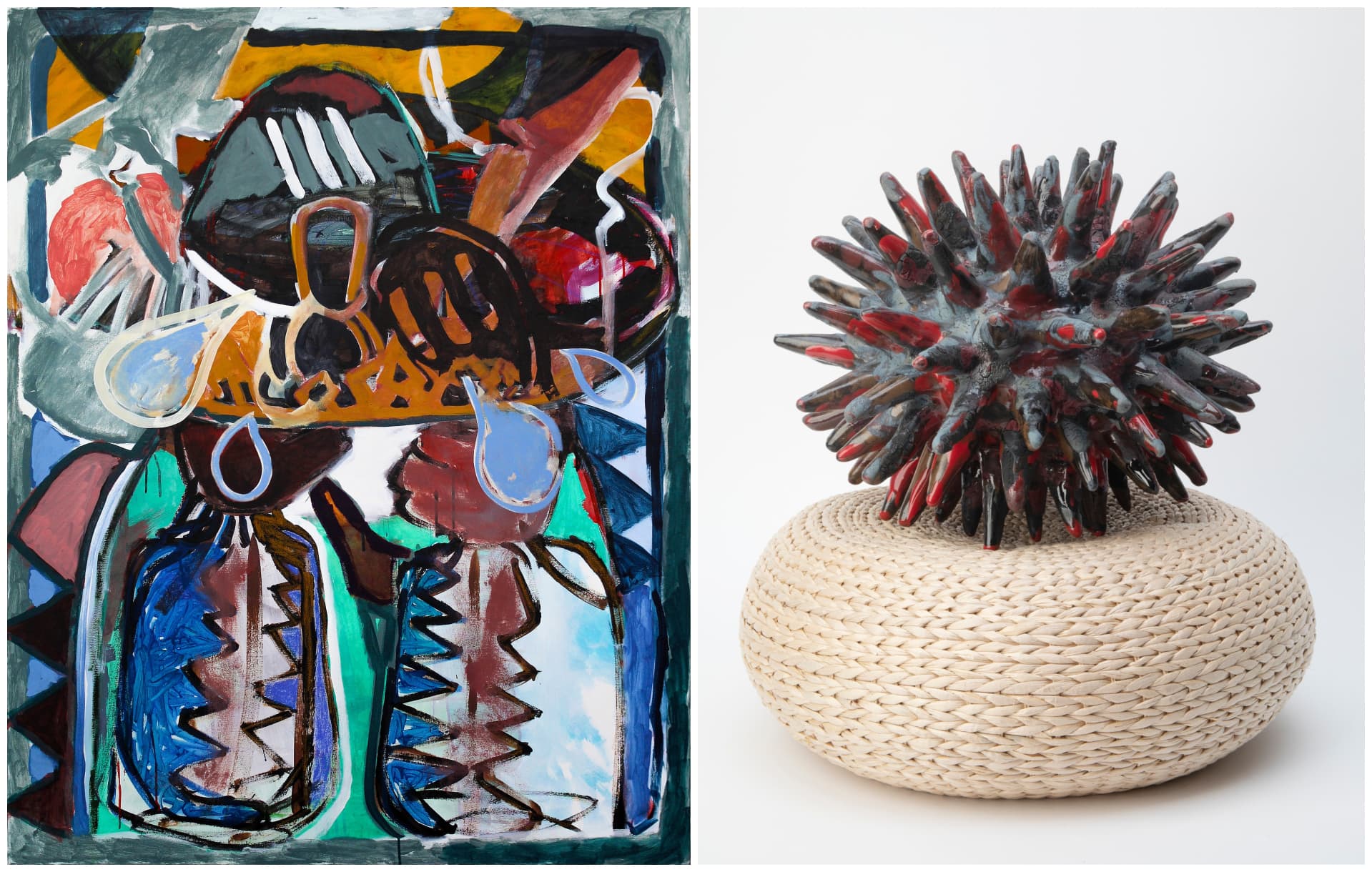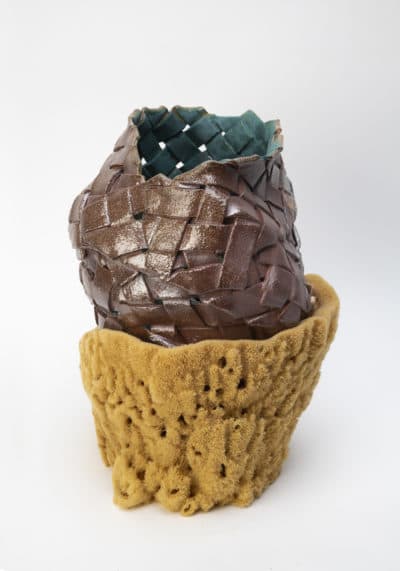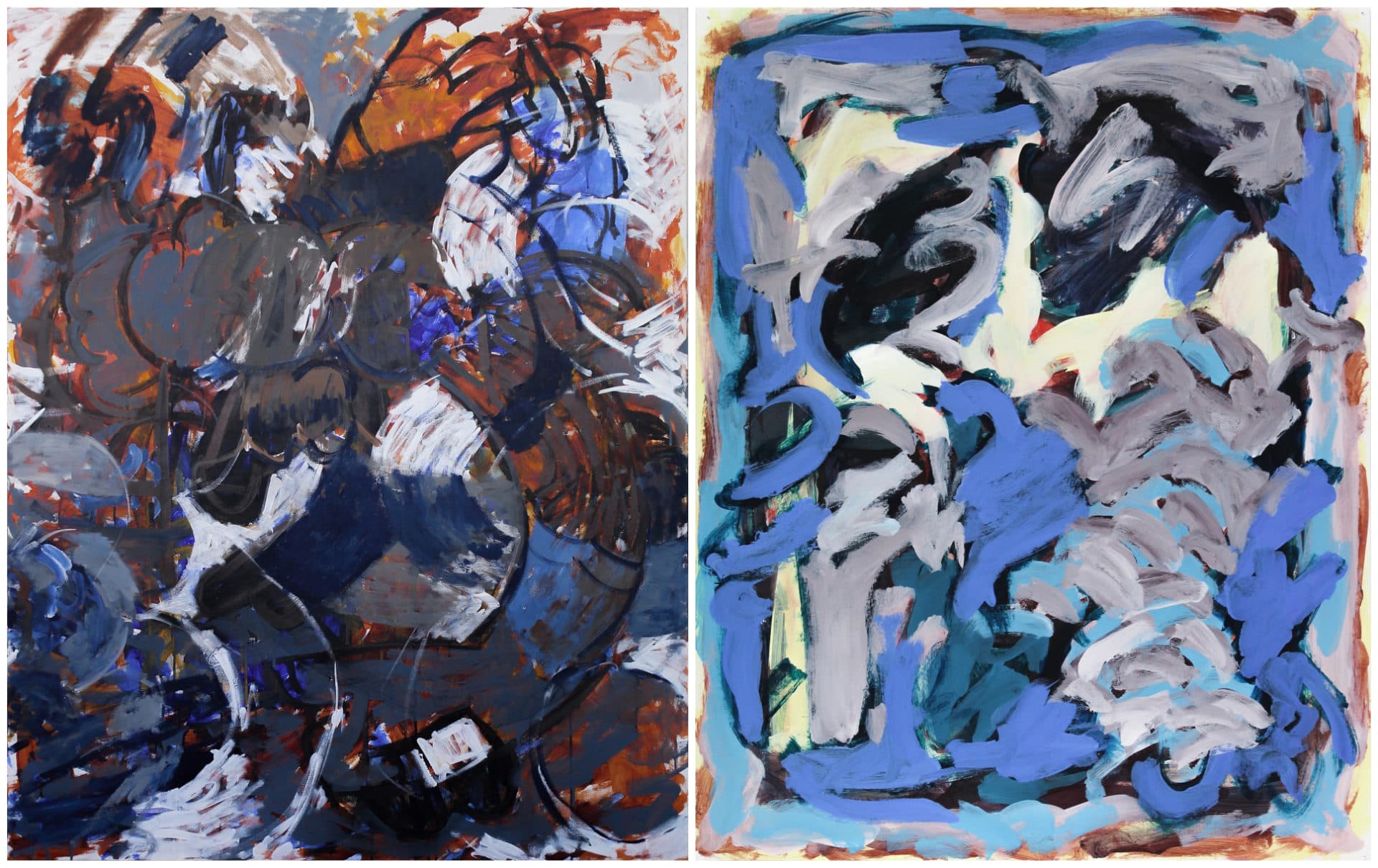Advertisement
At LaiSun Keane, Two Artists Investigate Identity And Belonging

Anina Major has spent a lifetime balancing the push and pull of place and identity. Growing up in the Bahamas, then later moving to the United States, she’s thought a lot about what it’s like to live on an island where inhabitants adapt their sense of self to fit the touristic stereotypes. Major calls it a kind of “cultural erasure” that she now contemplates from afar, as a transplant to New York.
Demetri Espinosa, on the other hand, has spent his life negotiating the “cultural dissonance” of being raised by a Greek mother and Mexican father. Attending the Hellenic American Academy in Lowell as a child, he spoke Greek in school during the day but heard Spanish in the evenings at his father’s Mexican restaurant.
Was he Greek? Mexican? American? All three, or none?
“I grew up feeling a split between the native cultures of my parents and the American culture within which I was brought up,” he says. Figuring out how all the pieces fit together, he adds, has “become a really foundational aspect as to why I create to begin with.”
Both Major and Espinosa provide their very personalized takes on identity, culture and belonging in “A Chorus of Marks and Artifacts,” on view beginning June 3 at LaiSun Keane in Boston. Major is a ceramicist who uses clay to probe the idea of cultural dispossession occurring, not only when a “performed self” kowtowing to tourists’ expectations becomes actual self, but also the cultural dispossession born of being an immigrant in America. She has voluntarily left behind the home she loves, and sometimes she feels guilty about it. Espinosa’s medium is paint used to create busy abstract compositions filled with a riot of painterly gesture and motion, alluding to the possibilities and contradictions in living in America as a person of mixed cultural background.
“There’s no single way to view that,” he says of his work. “There's this cloud of possibilities of how one could consider oneself when faced with the question of ‘who am I,’ ‘what's my identity?’ There's an infinite number of possibilities and answers. And so those marks are representative of those sorts of myriad possibilities.”

Major is an assistant professor of ceramics at the Rhode Island School of Design. She is also the daughter of an architect and granddaughter of a straw vendor who taught her how to plait baskets to be sold at the market back in Nassau. As a young girl, she might never have imagined that a craft used to create souvenirs for tourists would one day become a source of inspiration for sculpture.
Among the pieces on view are two incorporating plaited clay that are, in effect, braided “baskets,” reinterpreting a common Bahamian handicraft into pensive and poetic works speaking to longing, pride, even loss. In one piece entitled "Grown From," Major has combined soda-fired stoneware in brown and turquoise, and sat it atop a base of natural sponge, another feature of her native Bahamian landscape. The hybrid use of materials echoes one of the central ideas of the show: that she, like many of us, is a hybrid of cultures and identities.
In her piece “Red Tip Loci,” Major recalls another treasured feature of the Bahamian landscape, the sea urchin, as well as dried blowfish for sale at the Nassau Straw Market. She combines a ceramic spiked orb with a woven basket of the sort her grandmother used to make. For Major, the spiked “loci” is a “personification of self,” referencing not only her love for sea diving and sea creatures, but also, “being uprooted from a particular place and then being placed somewhere else. How does one come to terms with that?... How do we retain some connection to things that we know from the past?”
Somewhere along the way, Major discovered that the Lobi women of Burkina Faso made similar spiked orbs, often presented on a woven mat, which were meant to act as a sort of protective spirit.
“It was speaking to again, what I think the weaving also speaks to…that there are certain things that connect us,” she says.
She was also amazed that she, a child of the African diaspora, had picked up on a form also in use in parts of Africa: “It meant something else but also aligned with where I was, what I was feeling about it, completely coincidentally.”
Espinosa says his paintings are “all about the mark.” He aims for a sense of disconnection and disintegration so that his paintings feel “almost random.”
“It’s meant to mirror the feeling of not quite being able to integrate everything in a coherent way,” he says.

When you get some distance, though, it all comes together, as in his pieces “Late Night Swim,” “Deep End” and “Drowning,” painted in fervid blues, grays and blacks and referencing water — another theme held in common with Major.
“The key feeling that I'm trying to get across with my mark-making and ultimately, as a human being, as a single entity, is despite having these disparate cultural cues… you're still ultimately one single being. And so, too, are my paintings…singular things.”
Though the two artists had not met prior to being paired together for this show, they made a point of meeting a few months back. They talked about what they have in common and discovered that though they work in different mediums with vastly different sensibilities, it’s actually quite a lot.
“We both have these kinds of multi-layered identities when we talk about what it means to be American,” says Major.
“I think we're both grappling with being pulled in different directions by our cultures,” says Espinosa. “It's about culture and identity for both of us.”
“A Chorus of Marks and Artifacts” runs June 3-July 18 at LaiSun Keane.
